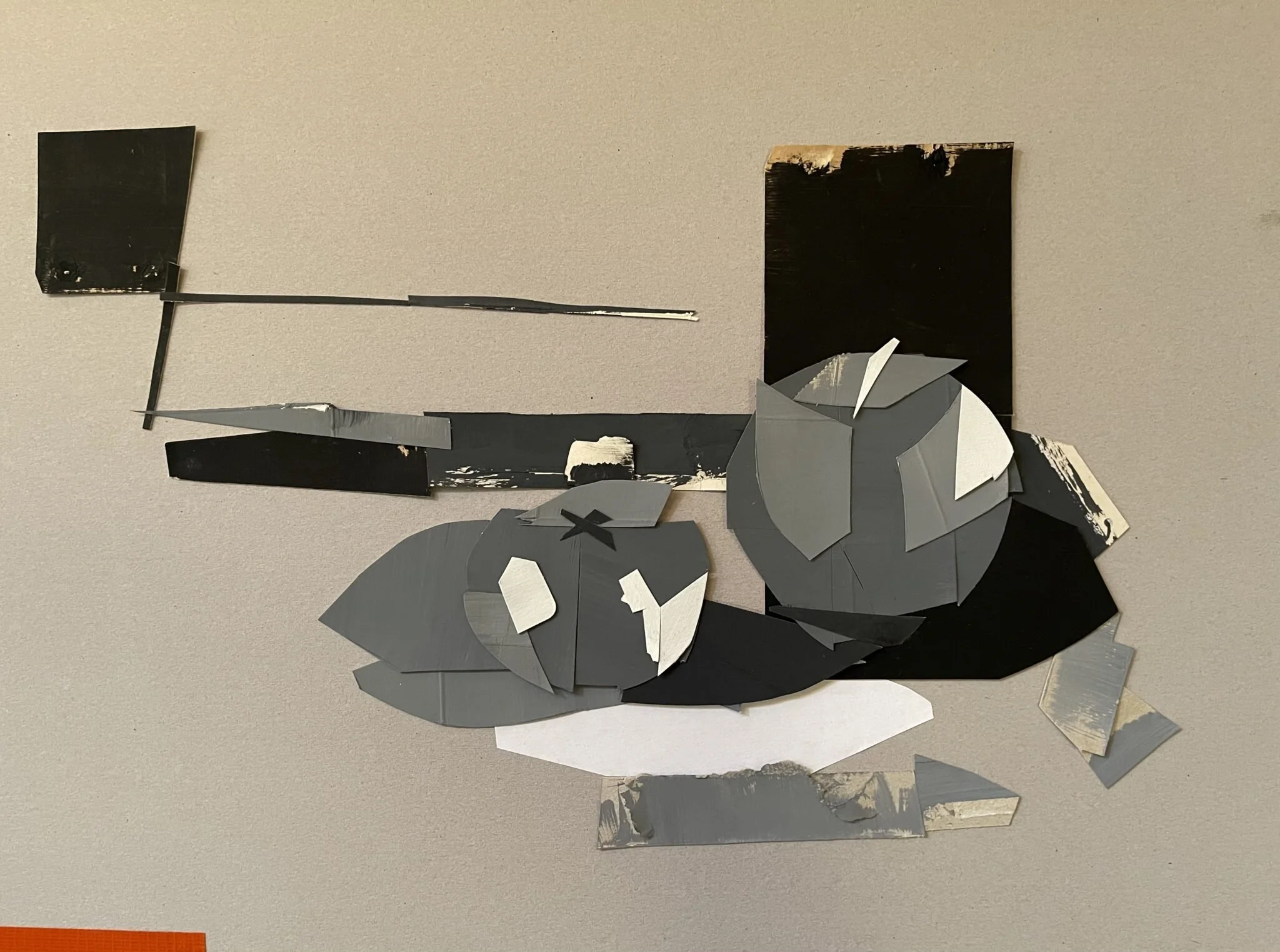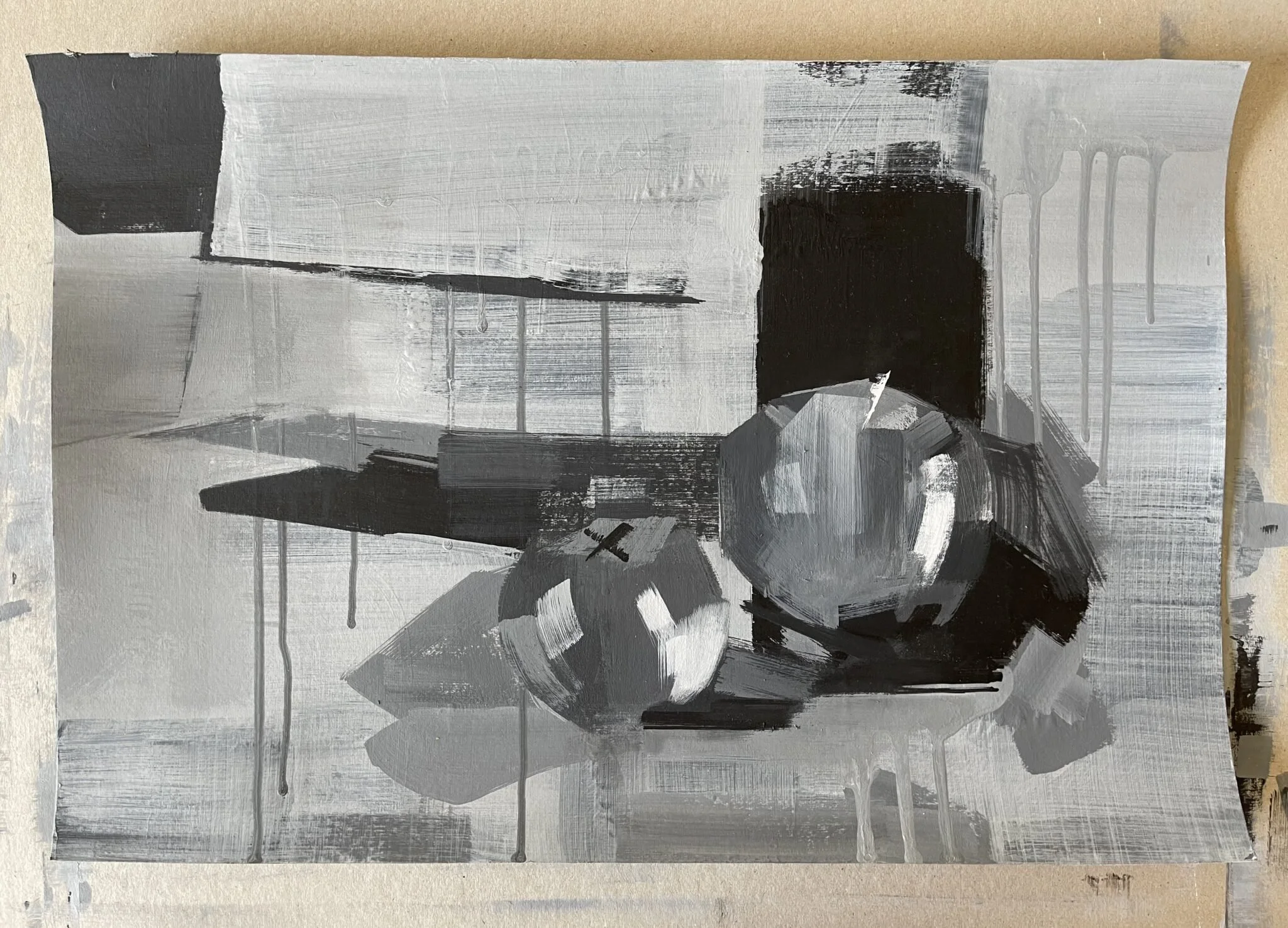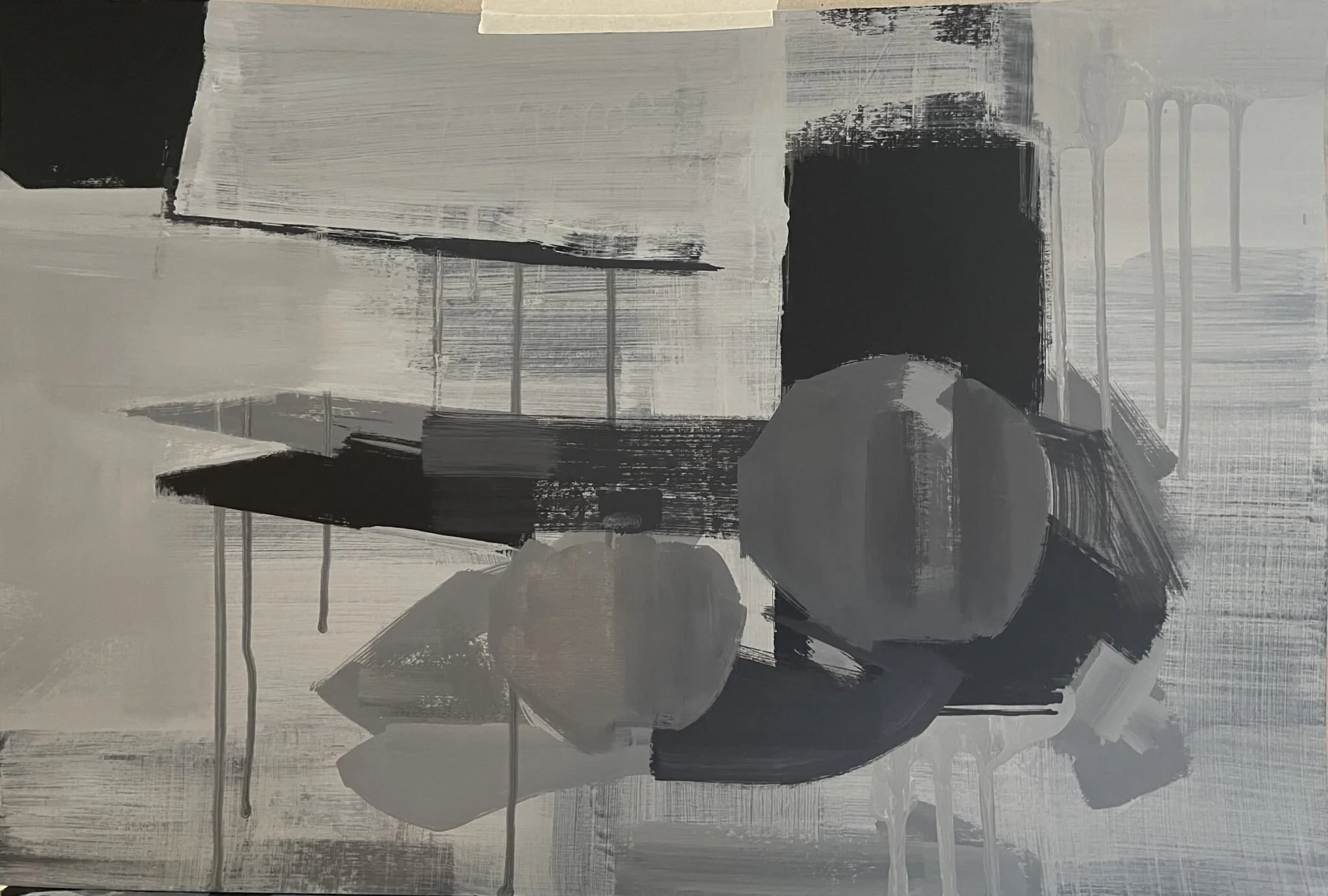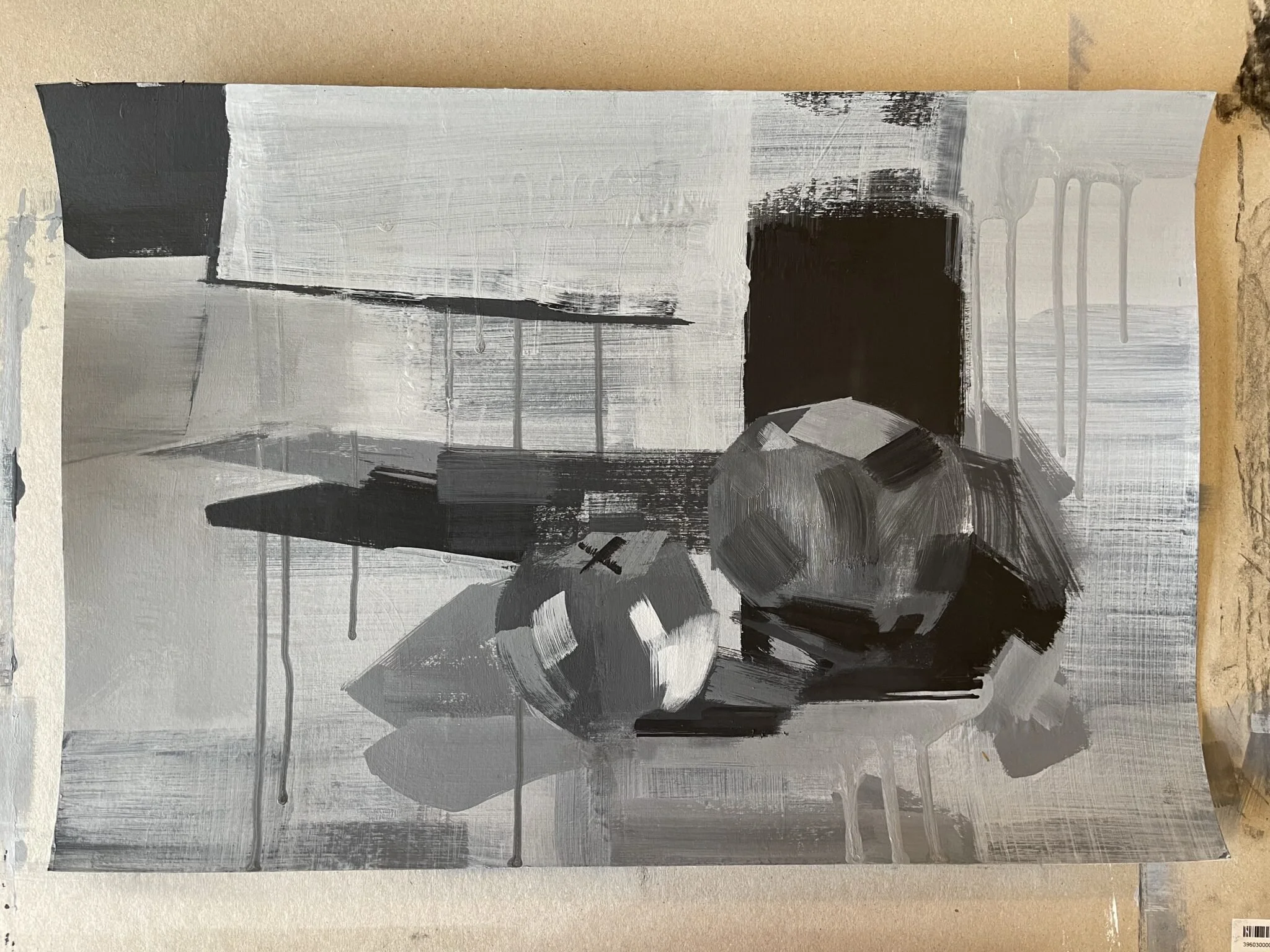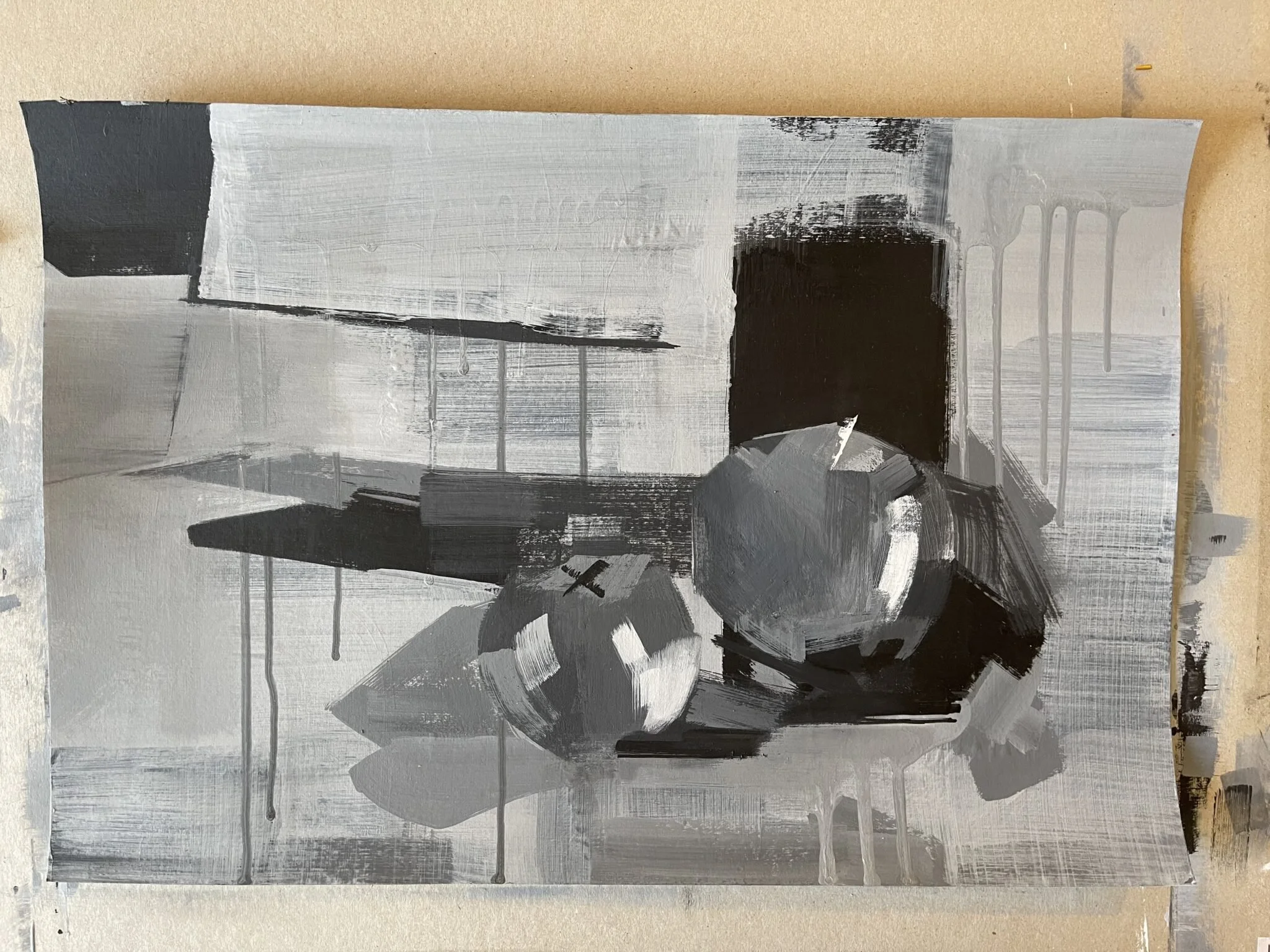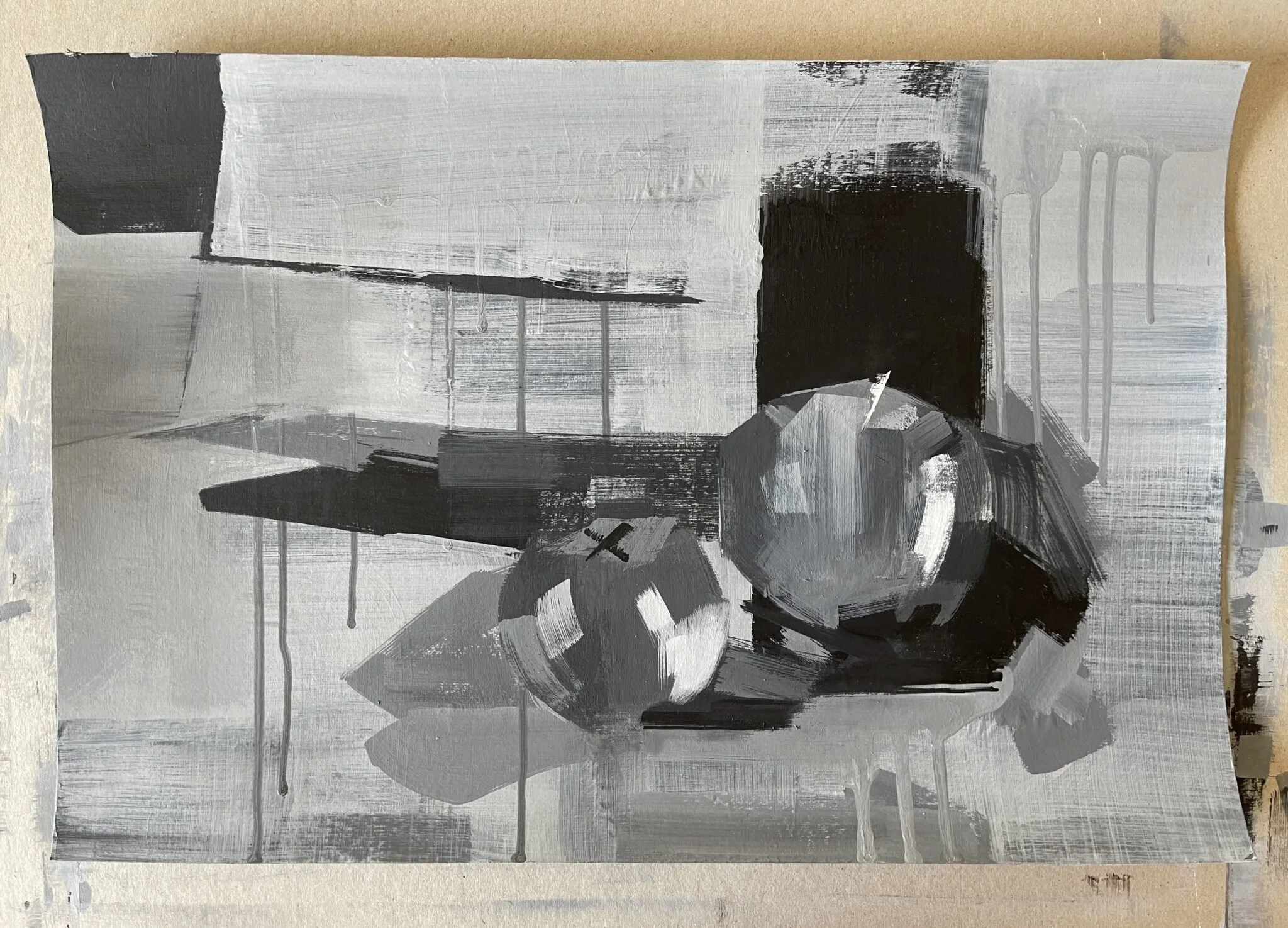Cover Image Flockhart K, 3D Study Of Still Life (2024)
EXERCISE 1: CONSTRUCTING A DRAWING
Observe the three dimensional spatial construction. Try to keep the tones accurate within your simplified range, so that the final structural collage has some sense of directional light.
Find a drawing you made previously that modelled tone as precisely as you could. Take that drawing now and pin it up where you can see it at eye level. Paint some sheets of card in 3 shades of tonal greys and use these to correspond to elements of your drawing.
Fig.1 Flockhart K, 3D Study Of Still Life (2024)
It begins quite clinical. Evaluating the forms and tones. Then it starts to take on the qualities of the materials Im using.
This again proves to me that material choice is, or becomes, genetic to the work.
The way something moves, pressures, cuts, folds, sits, etc.
Here it was the way the pieces of tonal cardboard overlapped or produced negative space. The existing creases, and or smudges from the initial paint work.
These things add more content to the drawing, but also more elements so they have to be managed. if unconsidered the work can become too busy and the subject is overwhelmed. Where I had more content emerging from these natural qualities, I had to balance out areas, and pull back to quietness.
EXERCISE 2: BACK TO 2 DIMENSIONS
The process in Exercise 1 was one of distillation and simplification. To build visual intelligence and observational skill. Taking the source imagery through that extra process may well have abstracted it quite considerably. Now use your 3 new dimensional drawing, make some sketches and identify interesting points. Select materials and make a new drawing directly from observation.
Fig.2 Flockhart K, Painted Study From 3D Still Life (2024)
I didn’t make any initial outlines. I wanted to build up the painting using tone, like the original drawing, which began as a still life exercise using only tonal charcoal mark making.
This approach made the brush strokes more abstract, and presented an opportunity to experiment with drips, bold and delicate lines, to create depth and interest.
Then the brush strokes became more condensed as I focused in on the main subjects.
Fig.3 Flockhart K, Process 1: Painted Study From 3D Still Life (2024)
Fig.4 Flockhart K, Process 2: Painted Study From 3D Still Life (2024)
Fig.5 Flockhart K, Process 3: Painted Study From 3D Still Life (2024)
Fig.6 Flockhart K, Process 4: Painted Study From 3D Still Life (2024)
As the painting progressed there were things along the way that worked, and things that were lost. The elements that worked were like markers that kept revealing the right direction. One brush stoke leads to another, whether it has to be evolved/painted over, or supported with another in alliance.
COMPARE THE 3 DRAWINGS
Creating these 3 drawings shows very clearly how a realist, conventional piece of artwork can be taken into the realm of abstraction. That by understanding your subject you can further evolve the nature of its tone, depth, emotion, to express the same subject articulately.
Generic still life, can be exchanged for landscape, portrait, etc, and by choosing a particular strong hold like tone….or colour, line work, texture, etc….you can drive the artwork into other territories to intensify the action of expression.
List of Images
Cover Image Flockhart, K. (2024) 3D Study Of Still Life. [Photo, Edited with Hipstamatic] In possession of: The author: Volleges.
Fig.1 Flockhart, K. (2024) 3D Study Of Still Life. [Collage] In possession of: The author: Volleges.
Fig.2 Flockhart, K. (2024) Painted Study From 3D Still Life. [Acrylic Paint] In possession of: The author: Volleges.
Fig.3 Flockhart, K. (2024) Process 1: Painted Study From 3D Still Life. [Acrylic paint] In possession of: The author: Volleges.
Fig.4 Flockhart, K. (2024) Process 2: Painted Study From 3D Still Life. [Acrylic paint] In possession of: The author: Volleges.
Fig.5 Flockhart, K. (2024) Process 3: Painted Study From 3D Still Life. [Acrylic paint] In possession of: The author: Volleges.
Fig.6 Flockhart, K. (2024) Process 4: Painted Study From 3D Still Life. [Acrylic paint] In possession of: The author: Volleges.

